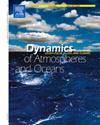A comparative study of the sensitivity of an ocean model outputs to atmospheric forcing: ERA-Interim vs. ERA5 for Adriatic Sea Ocean modelling
IF 2
4区 地球科学
Q2 GEOCHEMISTRY & GEOPHYSICS
引用次数: 0
Abstract
Advancements in atmospheric data have the potential to improve the accuracy of ocean modeling, as these models rely heavily on atmospheric parameters as key forcing inputs. One such dataset is the ECMWF reanalysis, with ERA5 being the latest version, succeeding ERA-Interim (ERA-I or ERAI). However, limited research has explored whether ERA5 improves ocean model accuracy compared to ERA-I. We use the ROMS model on the Adriatic Sea under two atmospheric forcing scenarios: ERA-I and ERA5. Results show that ERA5 calculates higher temperature and salinity values than ERA-I. ERA5 shows better alignment with satellite and Mediterranean reanalysis data than ERA-I. For temperature, ERA5 has a higher bias range (–2.29℃ to 0.83℃) compared to ERA-I (–2.34℃ to 0.80℃) and achieves a lower minimum bias, particularly in summer (0.02℃). Against Mediterranean reanalysis data, ERA5’s temperature bias range (–2.06℃ to 1.54℃) is lower range than ERA-I’s (–3.14℃ to 1.51℃). For salinity, ERA5 also has a smaller bias range (–0.02 PSU to 0.27 PSU) and achieves zero bias in spring, indicating a more accurate seasonal alignment than ERA-I. The warmer water temperatures in ERA5 are attributed to higher values of atmospheric parameters such as shortwave radiation flux, sensible heat flux, and air temperature, while, increased salinity is linked to more negative latent heat flux up to 10 W/m2, longwave radiation up to 5 W/m2, and higher wind speeds. These factors collectively lead to improved ocean modeling performance in ERA5.
海洋模式输出对大气强迫敏感性的比较研究:亚得里亚海海洋模式的ERA-Interim与ERA5
大气数据的进步有可能提高海洋模式的准确性,因为这些模式严重依赖大气参数作为关键的强迫输入。其中一个这样的数据集是ECMWF再分析,ERA5是继ERA-Interim (ERA-I或ERAI)之后的最新版本。然而,与ERA-I相比,ERA5是否提高了海洋模式精度的研究有限。我们在两个大气强迫情景:ERA-I和ERA5下对亚得里亚海使用了ROMS模式。结果表明,ERA5计算出的温度和盐度值高于ERA-I。与era - 1相比,ERA5与卫星和地中海再分析数据的一致性更好。对于温度,ERA5的偏置范围(-2.29℃~ 0.83℃)高于ERA-I(-2.34℃~ 0.80℃),最小偏置较小,特别是在夏季(0.02℃)。对比地中海再分析数据,ERA5的温度偏置范围(-2.06 ~ 1.54℃)小于ERA-I的(-3.14 ~ 1.51℃)。对于盐度,ERA5也具有较小的偏差范围(-0.02 PSU至0.27 PSU),并且在春季达到零偏差,表明比ERA-I更准确的季节对准。ERA5水温升高与短波辐射通量、感热通量和气温等大气参数值升高有关,而盐度升高与潜热负通量增大(10 W/m2)、长波辐射增大(5 W/m2)和风速增大有关。这些因素共同提高了ERA5的海洋模拟性能。
本文章由计算机程序翻译,如有差异,请以英文原文为准。
求助全文
约1分钟内获得全文
求助全文
来源期刊

Dynamics of Atmospheres and Oceans
地学-地球化学与地球物理
CiteScore
3.10
自引率
5.90%
发文量
43
审稿时长
>12 weeks
期刊介绍:
Dynamics of Atmospheres and Oceans is an international journal for research related to the dynamical and physical processes governing atmospheres, oceans and climate.
Authors are invited to submit articles, short contributions or scholarly reviews in the following areas:
•Dynamic meteorology
•Physical oceanography
•Geophysical fluid dynamics
•Climate variability and climate change
•Atmosphere-ocean-biosphere-cryosphere interactions
•Prediction and predictability
•Scale interactions
Papers of theoretical, computational, experimental and observational investigations are invited, particularly those that explore the fundamental nature - or bring together the interdisciplinary and multidisciplinary aspects - of dynamical and physical processes at all scales. Papers that explore air-sea interactions and the coupling between atmospheres, oceans, and other components of the climate system are particularly welcome.
 求助内容:
求助内容: 应助结果提醒方式:
应助结果提醒方式:


